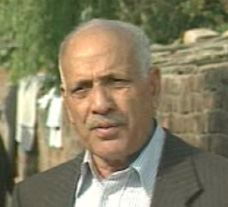Foreword
There is considerable evidence available that indicates
the onset of stagnation and consequent degeneration of Kashmir society by the
beginning of the tenth century (A.D.). It was becoming more and more difficult
to throw up and sustain a strong central authority for the whole of Kashmir
Valley. This led to a long period of intensive wars among Damaras and the
contemporary central authority.
Professor D. D. Kosambi, using a scientific methodology
for his investigations, has been able to provide us profound insights in the
appearance of this phenomena. We quote "The need to import trade goods,
particularly salt and metal, difficult transport, lowering of grain prices with
great increase in village settlements due to extensive water-works, meant
concentration of wealth in a few hands for each small group of villages
(emphasis added). A Kashmiri village could not be as nearly self-sufficient as
one in India for the rigours and more varied climate made it impossible to do
without wool, which had to be produced for exchange against cereals as a
commodity .... In Kashmir the man who had the surplus acquired more wealth by
trade, took to arms, and turned into a Damara.........The conflict between King
and Damara, feudal baron and central power, led ultimately to a Kashmirian Hindu
king plundering temple property and melting down the images for profit, without
change of religion or theological excuses, simply to maintain the army and a
costly state apparatus. Because this could not continue forever, we have the
ultimate victory of feudalism, and weakening of the central power .......To pay
for its essential import (salt and metal) Kashmir had an ideal commodity in
'saffron' (Crocus Sativas), relatively higher priced, but still in great demand,
and easy to transport over a mountain to a large market, and without serious
competition .... Without the Crocus or some equivalent commodity, the internal
history of Kashmir would have been far less turbulent." (The Sardhasatabdhi
Commemoration Volume, The Asiatic Society of Bombay. 1957, pp. 108-120).
The above analysis refers to a much earlier period than
the one dealt with in detail in Baharistan-i-Shahi. Nevertheless some useful
clues may be found here to the otherwise seemingly senseless quarrels and
conflicts of this period, prior to the Mughal takeover in A.D. 1587.
Disintegration of Kashmir society gathered momentum
from the 10th century onwards, through endless conflicts between Damaras and
contemporary kings. It was during this period that the new liberating ideas of
Islam, and some of its adherents slowly began to penetrate the Valley, and later
culminated in the deposition of Kota Rani by Shah Mir in A.D. 1339, ushering in
a new epoch in Kashmir history.
In the initial period there was hardly any resistance
to the conversions, and little social or cultural strife among the people. There
was peaceful existence between the traditional believers and the new converts.
Lal Ded symbolizes this period.
One of the beneficial consequences of the spread of the
new faith was greater movement and activity on the trade routes to the Western
and Central Asia. In particular contact with Persian civilization became quite
close, and linguistic barriers were crossed on a broad front. Alongside,
favourable opportunities were created now for enterprising and ambitious
noblemen and other adventurers from this region to thrive in the beautiful
Valley by building a strong social bas for their power and wealth.
All these vital processes have now to be sorted out and
critically examined by our new generation of the intelligentsia in the spirit of
modern historiography. Meanwhile all the available documents that have escaped
destruction, archaeological remains, linguistic and literary evidence, social
customs, need to be critically examined by our new generation of historians.
This may be regarded as an essential aspect of the great task of building a New
Kashmir of our dreams.
There is no doubt that Baharistan-i-Shahi is a valuable
historic document which deserves to be widely known, and studied for the
first-hand evidence provided by some influential courtier of Yusuf Shah Chak,
overthrown and imprisoned by the Mughal Emperor Akbar in A.D. 1587. The
anonymous writer appears to have worked on his theme largely during he first two
decades of the seventeenth century.
The late Shaikh Muhammad Abdullah frequently asserted
that he was the first Kashmiri after Yusuf Shah Chak to go about with his head
erect. That underlines the importance of this monarch and his times in the
consciousness of many people in the Valley, who still bewail in folk songs his
fate after his capture by the Mughals.
Dr. Kashinath Pandit has done his labour of love by
working on the original Persian manuscripts, and has produced a faithful English
version of the same, so as to make the contents available to a wider audience.
He is singularly qualified for this major task. Coming from a Baramulla family
with a long tradition of Persian scholarship spread over several generations he
got a Master's degree in Persian from the Punjab University, with distinction.
At the age of thirty-two he joined the University of Teheran (Iran) for a
doctorate in Iranian, and spent three years there. He has produced a biography
of Hafiz of Shiraz.
Dr. Pandit has travelled widely in Central Asia, and is
well known to the scholars in the Tajik Academy particularly. The diversity and
depth of his knowledge of the region is of timely importance to us in the Valley
in the context of recent developments. There is no doubt about his present work
being an important contribution towards the understanding of our past.
- N. N. Raina
June 25, 1989
125 Narsingh Garh,
Srinagar, Kashmir.
| 













No one has commented yet. Be the first!